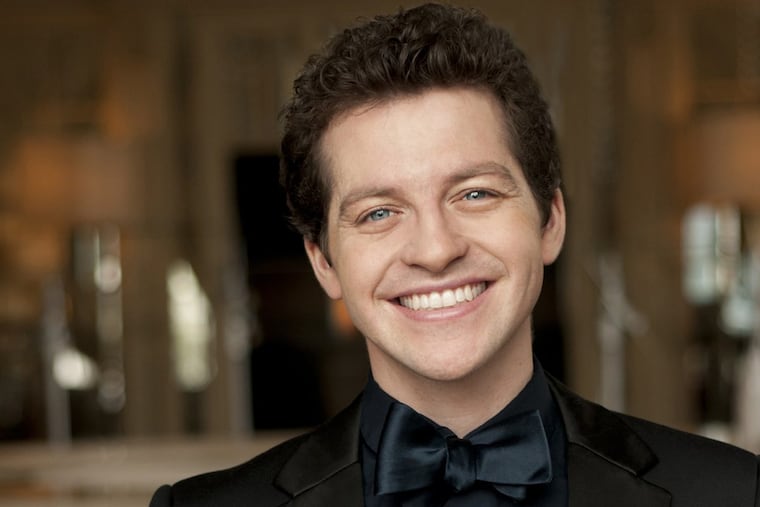Pianist Henry Kramer makes a stunning Astral Artists debut
A big personality with a big sound in Schumann and Ravel.

Subliminal messages of the nonmusical sort accompany every artist, and on Sunday afternoon at the Astral Artists recital debut of Henry Kramer, the relatively small size of the audience and humbleness of the venue didn't quite match what was emanating from the stage.
This is a pianist of enormous talent. Venue be damned, the music made it an event.
Not to fault Astral. The artist-assist group helps along careers that often take off in a big way, typically on a runway with a gradual incline. Astral has an impressive roster of pianists, with Simone Dinnerstein, Ilya Poletaev, and Andrius Zlabys among its laureates. What's notable about them all is their strong personalities — as performers, but as artists, too, in terms of the repertoire and projects they choose.
Now comes Kramer, and although he brought little in the way of exotic fare to Sunday's recital at the American Philosophical Society's Benjamin Franklin Hall — a functional if not glamorous space — the 31-year-old pianist personalized interpretations to such a degree that works emerged anew. He is a big personality.
Nothing was for the sake of flash. But how could you not be impressed with a Ravel "Alborada del gracioso" — morning song of the clown — that was so virtuosic, and which pulled an entire orchestra from the belly of the Steinway?
He also played the other four movements in Miroirs. It is a monumental undertaking – in length, emotional scope, and in terms of its varied landscapes. Many a pianist captures the random, flickering life of moths in "Noctuelles," but Kramer gave them an inner life, too, taking time to explore phrases lovingly. "Oiseaux tristes" (sad birds) gave off ripples of light, and "Une barque sur l'océan" (a boat on the ocean) has the piano doing the work of three harps, evoking squalls and inundation. Kramer made the opening a vast shimmering.
But the real stunner was the last movement, "La vallée des cloches" (the valley of the bells). Kramer managed to create three distinct color fields of sound — valley, sky, bells? — which lent a luxurious, three-dimensional air.
You might not have suspected such sensitivity from the recital's boisterous opening, Schumann's Kreisleriana. Kramer did not attempt to shave down the composer's jagged edges or tone down the contrasts. Still, there was something personal in the way he imagines each of these movements: songful here, explosive there. Kramer made the warm phrases of the fourth movement a study in paisleys.
Nestled amid other works of Schumann and Ravel, Kramer placed three movements from Six Etudes and a Dream by Hannah Lash, whom he met while a student at Yale (he also attended the Juilliard School). "Fast and Slow" was chromatic, tightly organized around certain patterns. "Thumbs and Pinkies," not far from late Debussy, floated away.
The last in the set, "Petit rêve pour les pétunias défuntes" was lyrical and sensitive, as any ode to dead petunias no doubt should be. But a figure lurked about that called back to earlier in the recital, and the pianist recognized it as such, shifting moods and colors as only a true Schumannite could.